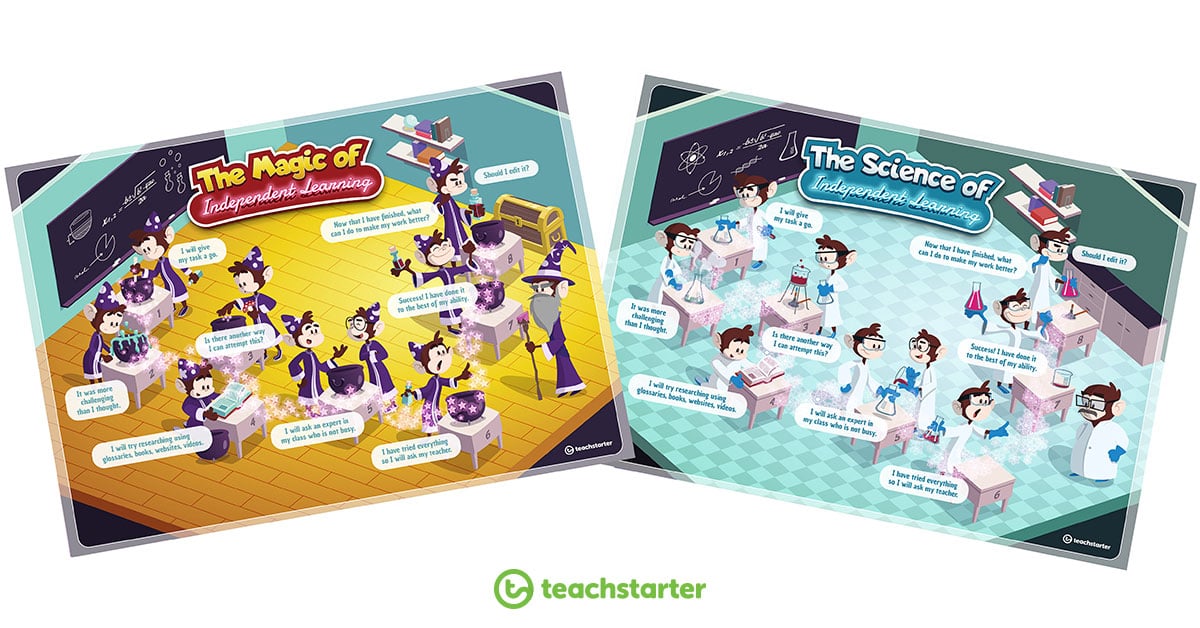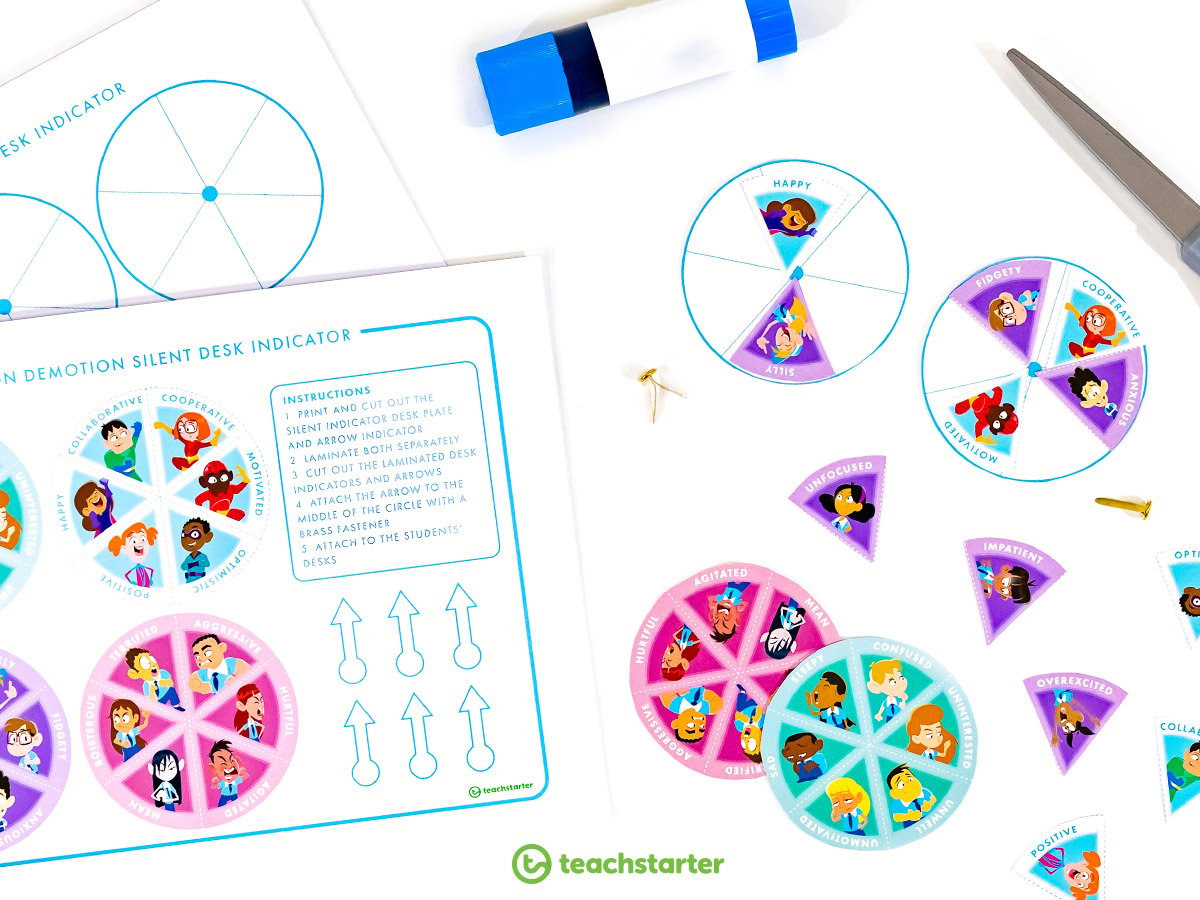Is there anything worse than “I’ve finished!” from a student when you are pretty sure there’s more for them to complete? So, how do you foster and encourage independent learning in the classroom?
What Is Independent Learning?
First off, let’s talk about what we actually mean by independent learning. Independent learning is about shifting the onus from the teacher to the student, so rather than information being imparted by the educator to the student, the child is able to regulate and assess their own learning.
Of course, this doesn’t mean the teacher is out of the picture! A big part of student-led, autonomous, or independent learning is structuring the learning environment in a way that motivates students to learn on their own and supports the independent process. That can mean developing a solid group work structure or a process for completing tasks independently.
You want your students to be able to set goals and make their own choices as learners, without you having to step in.
Why Is Independent Learning Important?
Fostering independent and motivated learners can feel like an impossible task. However, it’s the number one skill to help students become lifelong learners. It’s also a means to address the different needs of different students, allowing for kids in your class who are able the chance to learn and solve problems independently.

Let’s ponder a few questions…
Have you ever spent considerable time planning an in-depth task for your students, only to find it is rushed and completed in no time at all?
Have you had very needy students in your class who ask you what to do next every step of the way?
If the answer is yes to either of these questions, it’s likely that your students would benefit from having a set of tools to assist them through the process of completing tasks independently.
Independent Learning Strategies
The most important thing to think about when implementing something new in the classroom is… how will it work in your current classroom setup? Every class and teacher dynamic is as unique as the year. You don’t need to start big.
Here are some independent learning strategies you could start today:
- Establish independently driven routines.
- Create an open environment.
- Encourage students to ask open-ended questions.
- Negotiate activity choices.
- Equip students with self-regulation strategies.
Independent Work Checklist
Having a checklist handy will help guide your students through the process of independent work, so they can learn to practice the steps until they become a habit.
Our handy checklist includes reminders on what to do …
- When I Get Started
- When I Need Help
- When Others Are Nearby
- When I’m Stuck
- When I Think I’m Done.
The Magic of Independent Learning Resource
One independent learning strategy we created at Teach Starter makes use of our little helpers, The Magic of Independent Learning and The Science of Independent Learning monkeys!
These characters help encourage your students to go through their own independent steps before relying on their teacher to help them.
The steps include…
- Give it your best try.
- Try it another way.
- Use resources available to you.
- Ask an expert in the class.
- Ask a teacher.
- Use your extra time to improve or edit.
If a student asks for help, you can ask them to make sure they have gone through their independent strategies first.
One of the steps is for students to ask an expert in their class. Students relate well to each other, so they can make the best and relatable explainers for each other. To assist with this set up in the classroom, you can have a name chart for those students who are busy with their work and those who are happy to lend a hand if needed.
This also encourages students to be supportive of each other without them feeling obligated to spend their time helping others if they need to finish their work.
Another tip: Advise students to use resources available to them. For example, if you pair up students to talk about a book they have learned, you may want to provide them with checklists they can use to prompt the conversation:
[resource:2193274]
Help Students Find Their Groove
One independent learning strategy that will serve your students for life is the ability to get in touch with their own interests so they can dive deeper into their learning.
Fostering this skill can be as simple as surveying your students on specific topics to give them direction to start their independent study or giving them space to create lists of their interests, so they have an organized path.
[resource:2193062][resource:2679798]
Independent Emotional Learning
Another brick wall that students may come up against during independent learning is their emotions and how to control them. Giving students the tools to easily express how they are feeling during learning is another way that you can build up independent learners in your classroom.
Emotion Demotion resources are the perfect way for students to express these feelings easily without having to raise a hand and draw attention to themselves.
[resource:2200658][resource:2200650][resource:2200638]
This collection of resources includes:
- Emotion Demotion poster that introduces the Emotion Demotion teams (tuckered out team, cool crew, silly squad, grumpy gang).
- The Emotion Demotion – Desk Mat for students to use to brainstorm their own strategies on how to harness their emotions in the classroom.
- The Emotion Demotion – Silent Desk Indicator for students to place on their desks and allow them the opportunity to express how they are feeling without having to communicate verbally.
Learn more about creating a positive learning environment!
We’d love to hear from you! What do you do in your classroom to encourage and foster independent learning?
Let us know in the comments section of this blog.









Comments